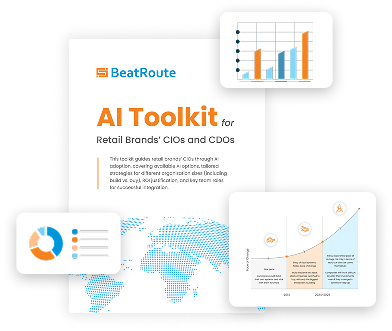Enabling Sales Team, Distributors, and Retailers for FMCG Route-to-Market Success
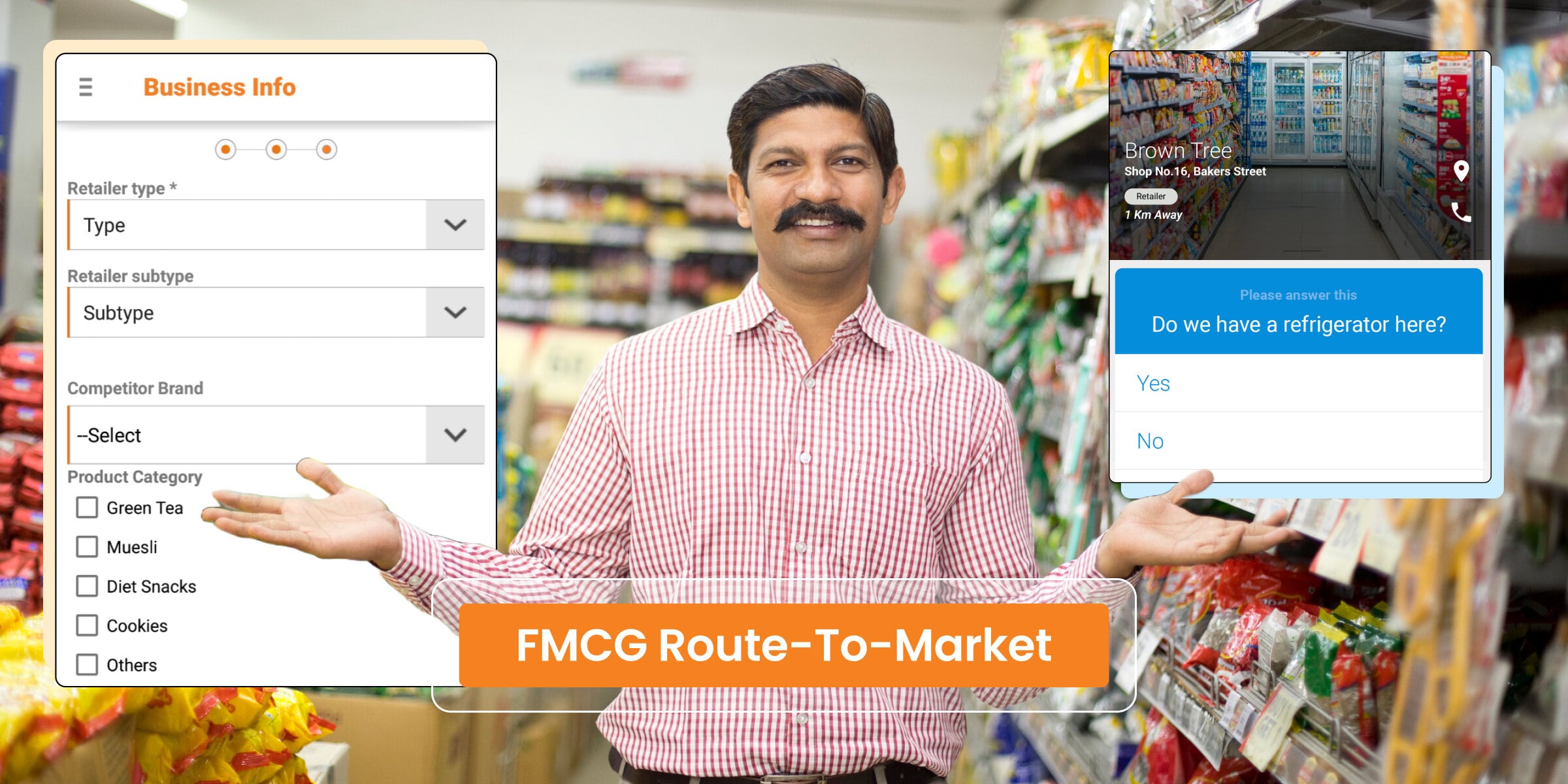
The fast-moving consumer goods or FMCG industry is overall characterised by a significant inventory turnover and wide distribution. It is crucial for brands to maintain and navigate different sales channels and overcome inevitable challenges in an effective manner to establish market dominance. Success in this regard depends largely on effective collaboration between sales teams, distributors, and retailers.
While sales teams ensure retail execution, distributors manage the flow of products to B2B customers, and customers or retailers act as the frontline for your sales or offtake.
However, despite clearly defined roles, a seamless collaboration among these stakeholders is a far cry from reality.
All of them may be working in isolation – sales teams may not have the means to record stock accurately or record customer feedback/complaints or distributors and retailers may not be able to self order, resulting in delayed deliveries/understocking or unable to see their sales goals and next milestones in real time for the stimulus to order more or in range. This is just the tip of the iceberg and there are many more roadblocks that stem from not operating in a collaborative environment, affecting your sales goals. It must also be noted that issues can be related to tech enablement as well as related to the behaviour of the sales team, distributors or retailers.
Therefore, there are two issue types to look at when considering hurdles to the FMCG route-to-market – automation and behaviour.
| Workflow Automation-based Problems | Behavioural Problems |
| The brand-provided system or app is complicated to use with a steep learning curve, affecting many users. | Sales reps miss certain steps of their SOPs. Basically, your sales team doesn’t or isn’t able to do its job. |
| A lack of custom/flexible workflows for users or a system that does not cover all workflows required for effective working. | Not everyone is able to utilise the technology equally well to derive intended value from it. |
| System that’s focused solely on tracking attendance or location. | Sales reps are not motivated enough or have unmet skill gaps. |
For an FMCG brand, failure for all stakeholders to converge on their sales goals means that growth slows down and that there are limited to zero real-time insights to take proper corrective actions. It’s not yet very common for systems to provide an all-inclusive solution and visibility, highlighting a very real need for digital solutions that can support human efforts to unify sales teams, distributors, and customers on a single platform. Today, this is not a matter of choice but one of criticality as brands that prioritise end-to-end collaboration, visibility, and information sharing are stronger for it, be it for streamlining operations or precisely recalibrating for new market developments.
On that note, this article was written to not only bring about awareness about problems plaguing the FMCG industry but also the solutions to those problems. Read on!
Sales Team Related Problems
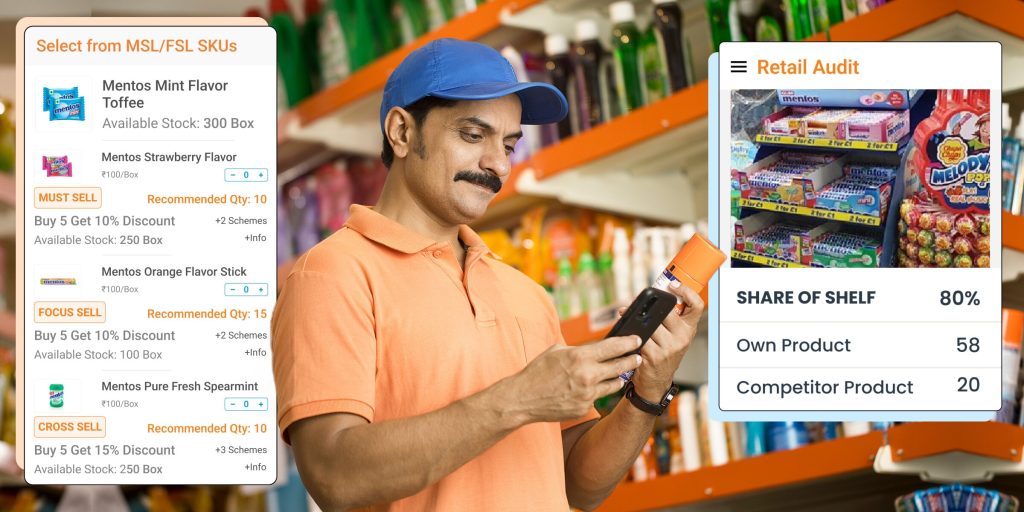
- Failing to Onboard The Right Stores (Blind Onboarding)
Store profiling takes into account various pre-defined factors and creates something like “store personas” to help brands understand which stores align with their goals and which don’t. In the absence of adequate store profiling that considers location, sales potential, space, type of products sold by the store, etc., incompatible stores may be onboarded. For example, if your brand is into biscuits and crackers, you don’t want your products to be placed at medical stores that offer only 5% of their shelf space to non-medical items.
- Failing to Manage Assets Effectively
Assets such as electronic displays and visi-coolers are expensive investments and it’s in the brand’s interest to maintain them; sales of certain products may even depend on them. Maintenance is hampered by irregular audits and a tedious escalation process, made worse by a lack of visibility or updates on resolution status. The obvious outcome of such a scenario is lost sales. For example, if a retailer complains that your visi-cooler malfunctions or doesn’t cool its contents all the time, any delay in capturing, assigning, or fixing will be detrimental for you and the opposite for your competitors.
- Failing to Create The Right Order Basket for a Customer/Store
Pushing a premium-priced SKU to a local mom&pop store/kirana store in a neighbourhood with middle-class consumers is not going to work. Neither will larger volumes than a store’s sales potential be bought by the retailer. Any attempt to persuade in this regard will not work because retailers have a clear understanding of what may or may not sell and don’t want to be left with expired products on their shelves. Apart from the obvious brand damage that you will suffer from this, without a system suggesting store-appropriate product combinations and a scheme engine to apply the right schemes, sales will inevitably underperform.
- Failing to Do an Accurate Competitor Analysis
If you do not know what the competition is doing with their promotions or pricing, you will never get ahead of them. This is precisely the case for brands where sales reps have no reliable system to audit the in-store competition or an efficient workflow that results in quick re-strategizing. Your schemes or pricing will always be less lucrative to a retailer or retail chain when you don’t have a process and relevant KPIs in place to capture and disseminate in-store information.
- Failing to Maintain Proper Stock Per Outlet
Availability of your products in a store is the first step towards good sales. Retail outlets must be well-stocked with your products as every instance of understocking is a major missed opportunity. For FMCG, the product turnover is huge, meaning it is very easy to go under the stock norm and not realise it before you are severely understocked. Without the means for product promoters and sales reps to capture stock systematically and regularly, you will notice sudden sales loss in stores.
Like understocking, overstocking also hurts your business. Stock lying unsold at stores adds additional inventory costs, and erodes stores’ trust in your brand.
- Failing to Report Visual Merchandising Issues
Visual merchandising in a retail outlet is an understanding and agreement between brand and retailers. As such, every standee, shelf divider, and planogram should be on point and at specific locations. These are sometimes accidentally or even deliberately moved or affected, necessitating a need for constant and effective audits. Without a system for product promoters/sales reps to accurately record any discrepancies, all reporting will be at the mercy of paper notes or assumptions, resulting in delayed resolutions and even failed campaigns.
Traditionally, brands used (and many still use) third party agencies for VM reporting/audits. This strategy is costly since the agency is sending their resources to each store solely for your audit. Additionally, it makes it difficult for you to make quick changes/iterations to your strategy since you have to work with an external team for on-ground execution. Getting the audit done by your own team that is already visiting the stores is not only cost effective, it also puts more power and freedom in your hands.
- Failing to Enable and Educate Product Promoters
In Modern Trade outlets, brands deploy product promoters at outlets where they expect good ROI by improving footfall conversion. But you might miss the expected revenue boost if your product promotion game is misfiring. What this means is that although you have product promoters at stores where you deem it necessary, they are either not confident about pitching your product or are not inspired to do so. Additionally, there may be behavioural problems that prevent them from getting you the intended results, i.e. a sales uplift. To explain, underperforming product promoters are probably not educated on what you are selling or there is no lucrative rewards structure to drive them on.
At the same time, a lack of a system or app that can capture, store, and escalate stock norm deviations and other issues leads to lost sales. In the same vein, de-listing of your products by a retail outlet requires immediate flagging that is again impossible without a systematic set up, leading to lost sales.
- Failing to Use Holistic Systems for HORECA Channel
This does not apply to all brands, but if you are selling in the HORECA channel, you are likely to encounter this challenge. When a lead is identified in this channel, they must go through various stages before becoming a bona-fide customer. This requires phone calls as well as visits by sales reps as human engagement between them/technical experts and chefs/management is what moves the conversation forward. Once the customer has been onboarded, the workflow requirements change completely, from lead management to relationship management.
Most CRM systems meet either one of these requirements. As a result, your team either uses 2 separate tools for both, or only a part of their workflows are digitised by the deployed system.
- Failing to Work With a Coworking Mechanism
The HORECA channel, i.e. Hotels, Restaurants, and Cafes, requires product demos after the initial pitch by the sales rep. It is quite important because the products include spices, food products, and cleaning supplies, some of which may have specific application methods that require practical understanding. It’s the sales rep’s job to assign a product technician or specialist to come and give a demo at the site (to chefs or housekeeping staff) but without a system that enables this, this delegation would be subject to phone calls and delays. The lack of a coworking mechanism highlights human errors and complacency.
- Failing to Turn Managers into Problem Solvers
Sales team managers are responsible for managing their team and monitoring attendance but they can also be potent problem solvers when equipped with the right insights. A lack of this renders sales managers as simple supervisors in-charge of the manpower under them with no real stake or visibility into your sales goals.They are unable to understand complicated dashboards and do not know what they are looking for. The reason is very straightforward – complicated dashboards that fail to put up regular actionable insights such as underperforming stores or credit issues; they are lacking a system that can not only record data but also derive insights and nudge them about such problems.
Solutions to Sales Team Related Problems
- Make the Onboarding Process Well Informed
Brand-store incompatibility originates from not knowing who you want your customers to be by considering their sales potential, region, consumer demographics, in-store space, etc.
Have a system via which a sales rep can efficiently capture customer profile details and send them to the onboarding team (or manager) for approval. This will completely eliminate any intuition- or assumption-based decisions towards incorrect onboardings. The solution is therefore, two-pronged – create data driven customer profiles and have a systemised method of capturing data on the field for further analysis before onboarding.
Furthermore, instead of having the number of stores onboarded as a target for sales reps, count only the stores which order a second or a third time. This encourages sales reps to look more critically at stores and put their effort in onboarding stores which are likely to give repeat sales.
- Pay Attention to Asset Management
Visi-coolers, electronic displays, and any other expensive asset are meant to support your route to market. As such, they also require timely maintenance or quick fixing, in case there’s a malfunction. Efficient maintenance requires regular audits and prompt complaint registration (where applicable), and seamless escalation of the issue while giving all stakeholders of that issue total visibility on the resolution status. This requires a software that’s reliable or an integration that can be trusted, such as BeatRoute’s Freshdesk integration. At the same time, asset issues detected during merchandising audits also need to be systemised and handled while keeping customers in the loop.
- Leverage AI for the Right Product Combinations
For successful commerce, it is important for your sales reps to push only those products that fit the buying trends or sales capabilities of a particular store. Any deviation from this shows your brand in a bad light, to say nothing of the loss of repeat sales. You can’t rely on human memory and intuition to remember product combinations and criteria for dozens of stores per sales rep. So what do you do? You harness the power of artificial intelligence that recommends the most tailored order baskets or products for a customer.
BeatRoute has helped numerous global brands to overcome order-related issues with its operational AI, assisting both sales rep and/or retailer during ordering. Our AI suggests the most appropriate products for a customer/store type and uses an efficient scheme engine to drive cross sales and up sales at that store.
- Learn About Competitor Strategies in Stores
Your competitors are always looking to overcome you with new strategies. They are looking at what you are doing, how it works, learning from it, and setting up new pricing or schemes to attract your customers to them. As a continuous process, this means that you must have an effective system or software for capturing all such measures so that you can remain in the game and keep customers satisfied with your pricing and promotions. Sales reps are responsible for carrying out store audits and using a reliable sales app that has multimedia features, they can capture all such information accurately via relevant KPIs and pass them on to their managers or concerned teams to assess and recalibrate existing strategies.
- Ensure Regular Stock Audits
Placing your stock in stores is only part of your retail execution; the real challenge lies in keeping your stock norm at the optimum level. You decide on a minimum number of units per SKU in a store and have automatic notifications triggered to the sales team/managers the moment the number goes under what’s recommended. Additionally, regular stock reporting, particularly in stores that don’t have product promoters, is crucial to identifying stock issues for fast remedy.
- Ensure Regular Visual Merchandising Audits
Apart from availability, good offtake depends strongly on your products’ visibility. Even with a store well-stocked with your products, it doesn’t mean a whole lot if consumers can’t find or see them. But despite your best-laid plans with regard to visual merchandising (planogram, lighting, standees, displays, shelf dividers, etc.) that’s supposed to pull consumers towards your products, they don’t always work as expected.
It is very important for merchandisers, sales reps, and/or product promoters to do regular VM audits at stores to ensure everything is compliant with regard to your visual merchandising. This can be easily done with a system that allows your sales rep to capture an image of a shelf or display and send it to a manager or merchandising team in charge of maintaining compliance.
But just having a regular system for VM audits is not enough, you should have a system in place that helps you quickly change/modify audit forms to keep pace with your changing VM campaigns in different territories and store segments.
- Help Your Product Promoters Do Their Job
Product promoters have more than one role but the most obvious one is what their name suggests – promoting your products to consumers in a way that leads to more offtake. To do that, they need regular information/learning content on their apps to keep them apprised of your products, new launches, and anything that can give them an edge while engaging consumers. While this keeps them confident about their role in your route to market, it also eliminates any need for separate educational sessions. Associate rewards with regular milestones and you can see them putting in that extra bit of effort towards a sales uplift.
Additional benefits of a systemised approach are the following:
- A reliable and user-friendly system supports the product promoter’s efforts to maintain sufficient stock by notifying them of deviations and allows them to document (multimedia capture) and escalate such cases to the concerned team/manager.
- Notifying managers or the brand in time when a retailer de-lists a product is very important as brands need to get in touch with retailers about it asap.
- Equip Your Sales Team with A Versatile System
As mentioned above, separate CRM and sales force automation tools in HORECA mean separate efforts and focus, running the chance of mistakes and oversight. Instead, there is a need for a combined system incorporating lead management and relationship management so that your team is able to manage the entire customer lifecycle from one place. Such an all-in-one solution allows the sales reps to focus on meeting daily targets efficiently, ensure timely visits, do better pipeline management, as well as collaborate with onboarded customers on business growth. In case of managers, no information or discrepancy is overlooked, meaning that they can take timely actions to address any issues.
- Save Time with an Effective Co-Working Mechanism
As mentioned in the problems section above, product demonstrations are particularly important in the HORECA channel. Without the practical knowhow into how a spice is to be applied or a bathroom cleaner is to be used, the hospitality industry will court trouble. Once the sales rep is done convincing a hotel to buy their products, it can be incredibly useful for them to have a system where they can look up and assign the available product specialist to a demo. Doing away with all the telephone calls and different levels of to and fro, this is the most direct and effective way to co-work with a product specialist and get a customer fully onboard with your offerings.
- Empower and Enable Sales Team Managers to Go Beyond their Token Role
Your sales team managers are integral to continued efficiency that defines good sales. They supervise and manage sales teams and given the right system that provides them with actionable insights, they can take your sales performance to the next level. To make problem solvers out of your sales team managers, you need to enable them with regular analytical insights from sales data that would give them a clear picture of what’s happening on the field and what could go wrong. A robust tool would not require managers to make human intuitive assessments and instead would do the analysis for them to simply base their actions on.
BeatRoute has a “CuesBOT” component that analyses data in the background and informs the managers when it detects any anomalies. For example, if it notices sales going down at certain stores in a territory, it can send a proactive nudge to that territory’s manager. Similarly, brands can decide which other nudges make the most sense for their sales strategy, i.e. certain sales reps not meeting their targets, certain products not performing in a territory, etc.
This is in addition to the custom reports and dashboards that you can build with our ‘Report Builder’, that are user-friendly with drill down, filtering, and sorting capabilities. Sales managers can assess data at varied levels of granularity for in-depth insights into sales.
For example, if a manager received a CuesBOT nudge that a group of retail stores under a sales rep are degrowing, then they could either seek further details from CuesBOT or alternatively, look at their dashboard, look at the insights, and perhaps make a correlation between said downturn and a decreased visit frequency at these stores (meaning more visits, audits, and engagement could be the answer). They could take corrective steps like personally visiting these stores and/or increase sales rep visit frequencies to these stores. This would be tricky with just raw data or even analytics without the actual insight that there was a sales slump.
Instead, enable your sales team manager to take an actual insight-backed action, ensuring they go beyond managing and actually work towards accomplishing your sales goals personally.
Distributor Related Problems
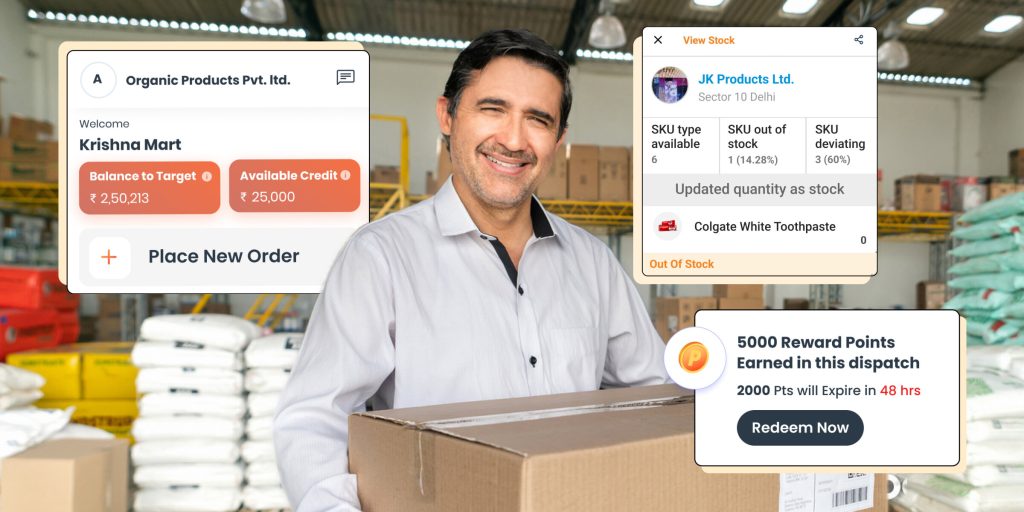
- Failing to Have a Reliable Claims Process (Including Returns)
Distributors can come across situations like damaged items, expired items or customer-centric trade promotions where they sell to retailers (secondary sales) for less than what they paid during primary sales. In a way, all of these constitute problems that require returns or charge backs and claims need to be placed for each. Without a systemised way forward, such claims become cumbersome to file, get lost or are delayed significantly, leading to dissatisfaction for distributors, resulting in brand damage and loss of sales for you.
- Failing to Gain Secondary Visibility
One of the main issues that brands face is that distributors don’t trust them. This leads to underhanded tactics such as distributors combining multiple invoice amounts to claim a reward meant for a single invoice. This is most prevalent when distributors prefer to use platforms like Tally instead of the brand’s DMS, cutting off the brand from important data. Without secondary visibility, brands are largely at the mercy of distributors when it comes to secondary sales. To have a system that offers both-way (brand and distributor) visibility seems to be the only answer.
- Failing to Give Sales Team Access to Distributor Insights
When distributors operate autonomously, it can lead to issues such as those mentioned in the previous point. Additionally, when sales teams don’t have access to important insights with regard to orders or credit or stock, they can’t take necessary actions to address problems. A distributor may soon run out of stock and instead of informing you or ordering, they may have chosen to stock up on a competitor’s item. Or maybe a distributor’s credit is about to be over and they won’t be able to place any further orders without your sales team’s intervention (payment collection).
Without a system that allows your sales team complete access to distributor insights, your primary sales would be affected negatively because problems wouldn’t be anticipated or addressed in time.
- Failing to Give Distributors Access to Analytics Regarding Sales Data
One thing is certain – simply having access to data is not enough if you can’t analyse it. For distributors, who can see sales data but can’t interpret it, i.e. analyse it to derive insights, their role remains limited to logistics when it can be much more. Distributors cannot help with brand goals if they work with simple accounting systems or traditional DMS that focuses on logistics such as managing accounts, dispatches, receivables, and invoices. For example, they can’t identify underperforming retailers and SKUs from available sales data and this means that they can’t help you take measures to fix such issues in time, and your bottomline will suffer.
- Failing to Enable Your Distributors
Distributors are responsible for conducting secondary sales to put your products on retail shelves. It becomes a problem when distributors can see diminishing stock at their warehouse but can’t act on it immediately because they can’t place an order by themselves. Even worse is when distributors, in the absence of timely nudges or analytics, don’t realise about diminishing stock until it’s very late, leading to lost sales at retailers’. Both of these require a dependable digital solution.
- Failing to Give Account Statement Visibility to Distributors
There are times when distributors refuse to pay their dues because they are confused about their past payments. They are worried that if past payments to the brand didn’t go through, then they could end up with no credit or monetary loss in the future. Naturally, this wastes a lot of time that could have been spent more productively, such as addressing product issues. Additionally, non-configurable invoicing means complying with local regulations or adding statutory information (if applicable) can be a real challenge, among other issues.
- Failing to Stimulate More Purchase by Distributors
Distributors, much like retailers, need incentives to buy from you. Your schemes for distributors must be head and shoulders above those of the competition to appear lucrative. The more they buy from you, the better your primary sales, a good sign for your overall route to market. Of course, the challenge is not just to design schemes but also to make them visible to distributors at the time of ordering, the inability of which can lead to a slump in your primary sales.
Solutions to Distributor Related Problems
- Make Your Distributors Happy about Their Claims
Claims such as product returns are important to handle with promptness due to the obvious sales loss associated with them. Any damaged or expired item at the distributor’s is an item that has no real value and needs to be returned/replaced immediately. At the same time, payment claims such as a chargeback against a retailer-focused promotion is a sensitive issue that can affect your brand name if dealt inefficiently; if a distributor is compelled to sell to retailers at a lower rate than what they paid during primary sales because you set up a new retailer scheme to promote secondary sales, the distributor will justifiably ask to be compensated for the “loss”, known as a chargeback.
A system (DMS) that not only allows for the registration of a claim but also informs all associated stakeholders about its status helps enhance not simply transparency, but more importantly, dependability on your brand.
- Provide Visibility to Brands on all Secondary Transactions
The brand-distributor relationship is one of trust but that requires both parties to be well-informed on both primary and secondary sales. While the first isn’t a problem as the transaction is between brands and distributors, real-time secondary sales information is often kept from brands as distributors may prefer to use their own accounting systems such as Tally that brands don’t possess.
The solution is this – get your distributors to use brand-approved DMS, but failing which, the DMS should be able to at least integrate with 3rd party apps/software like Tally to sync data between brands and distributors, much like what BeatRoute offers. The benefit of this is obvious in that with secondary visibility, brands are always aware of invoicing and sales with no room for confusion.
- Empower Your Sales Team with Distributor Insights
Distributor insights are a crucial aspect of your sales. A major part of your route to market is the distributor and therefore, when your sales team has a clear picture of what’s happening at a distributor’s, they are able to take preemptive action to deal with impending issues such as stock outs or credit issues. A unified platform that allows the DMS and the sales app to share information promotes clarity in the sales team, allowing them to prevent stockouts, loyalty issues, and dissatisfaction among distributors.
- Equip Distributors with Analytical Insights to Help Drive Sales for You
Distributors are your channel partners who, when given the ability to derive insights from sales data, can identify potential or existing issues for you to solve. A reliable DMS that not only collects data but also analyses it to develop actionable insights, helps your distributors to find out which product/SKU isn’t selling optimally or which store is experiencing a slump and address such issues, instead of simply worrying about dispatching orders or invoicing. They become your defacto problem solvers because you have now given them a tool that allows them to do more than logistical support.
- Empower Your Distributors
Limiting digitisation at the distributor end removes their ability to order that in turn puts their stock at the mercy of your sales team. Your distributor might have to await visits or go through a telephonic conversation with a sales rep to place the order, both of which can cause delays and affect your route to market. Instead, there is a need for a DMS that actually nudges your distributor to order, citing low stock. With easy DMS access via WhatsApp/Viber, distributors can enjoy ease of access (because most people use social media today), check products and schemes, and place orders themselves.
- Keep Your Distributors Informed on Payments
Any sort of payment-related issue can seriously strain a business relationship between a brand and its distributors. Therefore, complete clarity on both ends into transactions, available credit, etc. via a statement of account becomes a must. The BeatRoute DMS offers complete visibility of credit/debit notes and statements of account that promote clarity and resolve any payment query before it becomes a confusion or dissatisfaction. Moreover, the invoicing on the distributor’s end must be configurable, which is another aspect of streamlining payments that:
- May allow the invoicing to be in the local language for retailers who prefer it.
- May allow for the amount to be in a specific currency (where possible).
- May allow for compliance with all local or national regulations, including GST/VAT, statutory disclaimers, etc.
- May allow the addition of specific info such as order numbers, distributor name, etc.
- Incentivise Your Distributors via a Reliable DMS
Distributors are always looking for the next great deal when doing business with you. Great schemes that can benefit them as they stock up their warehouse with more of your products and in variety while you enjoy repeat business as long as you keep it up. Give them easy access to their DMS via WhatsApp/Viber, allowing complete clarity on schemes and sales goals. This will ensure that your primary sales are always up to your expectations and that retail orders will always be successfully fulfilled.
Retailer/Customer Related Problems
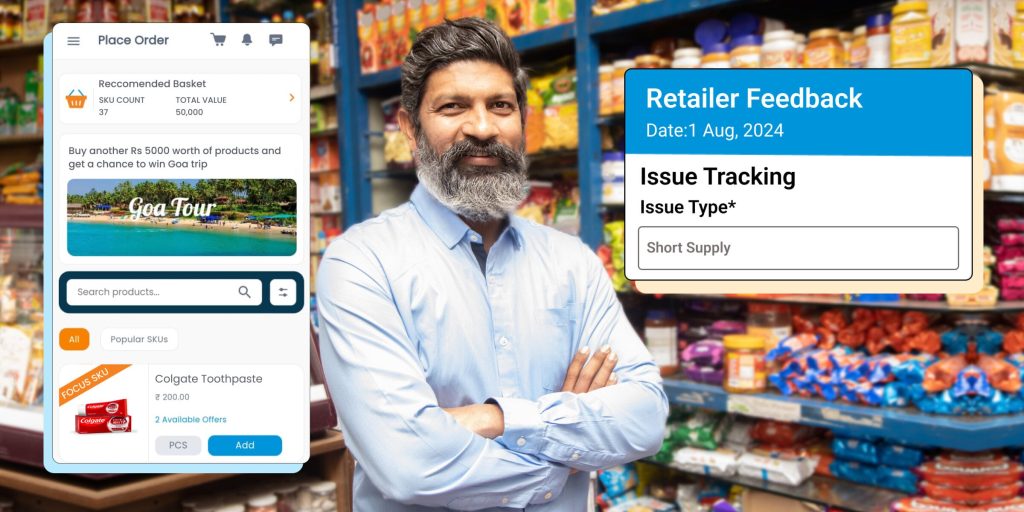
- Failing to Inspire/Educate Retailers to Push Your Products
Your retailers can be your de facto product promoters when placing an actual product promoter in said store is not possible. This applies to most general trade stores, especially smaller ones. However, advocating your products requires two things – an incentive and solid product knowledge. Without a proper rewards system in place for tertiary sales (which is visible to them), lucrative schemes for when they buy from you in range or volume, and regular updates on launches and features, your retailers will automatically choose the easier option; they will push a competitor’s more familiar and lucrative offerings.
- Failing to Give More Power to the Customers
The customer has an immediate understanding of stock availability even before the brand does because the customer is actively using your products. This presents a great opportunity to ensure your stocks never end at a customer such as in the HORECA channel, where there is a constant need to have supplies to run a hotel or a restaurant, all week, all the time. Without a digital medium provided by the brand, customers depend on sales reps to place orders and for delivery status, increasing stockout chances and lost sales at such places.
- Failing to Structure an Efficient Complaints Workflow
In any type of business, the customer is sure to come back with dissatisfaction from time to time but it is your responsibility as the seller to convert it into trust and satisfaction. You can’t do that if you have a convoluted complaints process or if the customer has no idea on what’s happening. Without a robust complaint management process, both the customer and the sales rep remain in the dark about the status of resolution. Customers with no awareness of how their issue is being handled are more likely to become irate and this majorly affects repeat sales.
Solutions to Retailer/Customer Related Problems
- Have a System in Place That Stimulates Customers to Buy and Sell More
Secondary sales stand on the shoulders of tailored product combinations and their associated schemes that customers deem valuable. At the same time, a structured rewards system also ensures that retailers/customers are incentivised to meet their sales targets. A customer app or software that displays AI-powered product combos and a scheme engine to go with them ensures that you don’t just see a rise in volume and range selling but an uplift in tertiary sales too.
- Set Up a Continuous Learning Process for Customers
It is universally accepted that at any point in your route to market, stakeholders must be aware of what they are selling. Though not as critical in FMCG as in cosmetics, product knowledge for retailers is always an advantage in stores devoid of product promoters. Customer apps that upload regular multimedia learning content accomplish this requirement, ensuring retailers, incentivised by your rewards program, are also knowledgeable enough to push your product.
For example, a consumer may come across a flavour variation/new SKU of an energy bar but may not be sure if it’s sugar free; maybe the packaging isn’t very lucid. An informed retailer can educate the consumer on the product and effect a purchase.
- Enable Customers to Self Order
Your sales reps have a beat plan to adhere to and will visit stores regularly but NOT daily. This means that situations might arise in which the customer might want to order immediately such as suddenly depleted stock or a noticeable demand for a specific SKU. Waiting for the sales rep who may visit a couple of days later can lead to stockouts or missed opportunities. This can be countered by a customer app that provides self-ordering capabilities, complete with AI recommendations and available schemes that the customer can take advantage of without depending on your sales rep.
- Have a Systematic Complaint Registration and Escalation System
Customer dissatisfaction with your product is inevitable as no matter how good you are, defects and other issues are bound to crop up. The best action you can take in such a situation is to quickly capture a customer’s complaint and then offer timely updates to the customer on its resolution process. All customers expect transparency; it’s not so much the TAT as it is the knowledge of what’s going on that’s important to them. A proper complaints’ system can allow for easy escalation and visibility so that your customer’s dissatisfaction doesn’t worsen by being in the dark. This ensures your sales rep is always ready to alleviate tension by being able to communicate resolution status.
Conclusion
Success in the FMCG industry, much like other industries, translates into resolving issues at every level of your route to market. Your sales teams, distributors, and customers are the major contributors to a great bottomline for your brand. Be it incentivising, claims, audits, ordering, insights, visibility or any other factor, collaborative automation needs to be at the centre of it all; a systemised approach allows you to bring all stakeholders together to work towards common goals.
BeatRoute has helped numerous top brands achieve their route to market goals with its seamless configurability and functional scalability.
Interested for more? Learn how we can help with our free demo.
About the Author
-
Apart from being a Senior Content Writer at BeatRoute, Soham is an avid reader of science fiction and suspense novels (Doyle, Christie, Brown or anybody great!) He also dabbles in historical narratives and wonders about our place in the universe. Cosmic viewpoints, Carl Sagan, and Neil deGrasse Tyson intrigues him. When not reading, you may find him spending his weekends or after-work hours watching a fulfilling movie with his family.
Use Goal-Driven AI to Achieve Retail Sales Uplift, Today!
Join enterprises in 20+ countries that trust BeatRoute, the globally dominant AI platform for sales force automation, field sales, DMS, and eB2B
Latest Insights & Articles
Here are the most impactful articles, platform updates, ebooks and reports for you.


